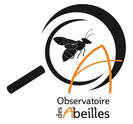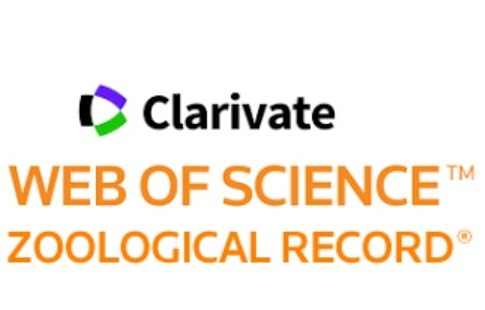Revue d'Hyménoptérologie
Journal of Hymenopterology
ISSN 2727-3806
ARTICLE |
Soda maker for field anesthesia as a step towards a non-lethal identification of wild bees and other flower visitors
|
Megan Toulzac, Mériem Methlouthi, Adrien Perrard
|
Citation
Toulzac, M., M. Methoulthi & A. Perrard (2022). Soda maker for field anesthesia as a step towards a non-lethal identification of wild bees and other flower visitors. Osmia, 10: 25–34. https://doi.org/10.47446/OSMIA10.3
Received 04 November 2021 - Accepted 06 June 2022 - Published (online) 08 June 2022
Indexation • Archivage - Archiving
Supplementary materials
Abstract
Species identification is currently a strong limitation to wild pollinator studies. It requires killing specimens for laboratory analyses, which can pose ethical issues in some programs of conservation biology and citizen science. The recent development of image-based identification tools using machine learning could challenge the current paradigm of required specimen euthanasia for species identification. However, to be accurate, these new methods call for standardized images or images of precise characters that are difficult or even impossible to obtain on live specimens. To facilitate the acquisition of these pictures, we tested two in-situ CO2 anesthesia protocols using material easily available, even in citizen science programs. We measured the time of anesthesia of 196 flower visitors belonging to the Hymenoptera and Diptera orders. The most efficient protocol enabled us to anesthetize 90 % of the specimens for more than a minute with a marginal mortality (1.5 %). Anesthesia time increased with specimen size in Hymenoptera and decreased with air temperature. Diptera were less sensitive to anesthesia. Further analyses would be required to investigate the potential sublethal effects of these anesthesia. These preliminary results suggest nonetheless that CO2-based anesthesia could help the development of non-lethal methods of wild pollinator identifications.
Keywords
Anesthesia duration, pollinators, Hymenoptera, Diptera, CO2, citizen science
Titre (traduction)
L’anesthésie sur le terrain par machine à soda, un moyen de faciliter le développement de méthodes non létales d’identification des abeilles sauvages et autres visiteurs floraux
Résumé
L’une des limites actuelles à l’étude des pollinisateurs sauvages est la difficulté d’identifier ces insectes au niveau de l’espèce. Le développement d’outils d’identification sur images par intelligence artificielle ouvre de nouvelles perspectives par rapport au paradigme actuel d’euthanasie des spécimens pour les identifier en laboratoire. Cependant, l’obtention d’images de référence standardisées ou de caractères morpho-anatomiques précis nécessaires à ces outils est difficile, voire impossible sur un spécimen actif. Pour faciliter l’obtention de ces photos, nous avons testé deux protocoles d’anesthésie au CO2 de spécimens sur le terrain avec un matériel accessible au grand public. Nous avons mesuré le temps d’anesthésie sur 196 visiteurs de fleurs, hyménoptères et diptères. Avec le protocole le plus performant, 90 % des insectes étaient anesthésiés pendant plus d’une minute. La mortalité due au traitement était marginale (1,5 %). La durée de l’anesthésie augmentait avec la température de l’air, ainsi qu’avec la taille des spécimens chez les hyménoptères. Les diptères étaient moins sensibles à l’anesthésie que les hyménoptères. Des études complémentaires seraient nécessaires pour appréhender les effets sublétaux potentiels de ces anesthésies. Néanmoins, l’anesthésie au CO2 sur le terrain pourrait faciliter le développement de méthodes non-létales d’identification des pollinisateurs.
Mots-clefs
Durée d’anesthésie, pollinisateurs, Hymenoptera, Diptera, CO2, science participative
References
Toulzac, M., M. Methoulthi & A. Perrard (2022). Soda maker for field anesthesia as a step towards a non-lethal identification of wild bees and other flower visitors. Osmia, 10: 25–34. https://doi.org/10.47446/OSMIA10.3
Received 04 November 2021 - Accepted 06 June 2022 - Published (online) 08 June 2022
Indexation • Archivage - Archiving
- DOI: https://doi.org/10.47446/OSMIA10.3
- Zoobank (ICZN): http://www.zoobank.org/5BBFDFCF-8E9B-4313-A291-FAC99BAF6466
- HAL (CNRS-INRAE): https://hal.archives-ouvertes.fr/hal-03689126
- Zenodo (CERN): https://zenodo.org/record/6618255
Supplementary materials
- Table S1. Data of specimens studied. [PDF] [Archived on Zenodo: https://doi.org/10.5281/zenodo.6581063]
- Table S2. Anesthesia duration for specimens exposed more than 60 seconds to the CO2. [PDF] [Archived on Zenodo: https://doi.org/10.5281/zenodo.6581110]
Abstract
Species identification is currently a strong limitation to wild pollinator studies. It requires killing specimens for laboratory analyses, which can pose ethical issues in some programs of conservation biology and citizen science. The recent development of image-based identification tools using machine learning could challenge the current paradigm of required specimen euthanasia for species identification. However, to be accurate, these new methods call for standardized images or images of precise characters that are difficult or even impossible to obtain on live specimens. To facilitate the acquisition of these pictures, we tested two in-situ CO2 anesthesia protocols using material easily available, even in citizen science programs. We measured the time of anesthesia of 196 flower visitors belonging to the Hymenoptera and Diptera orders. The most efficient protocol enabled us to anesthetize 90 % of the specimens for more than a minute with a marginal mortality (1.5 %). Anesthesia time increased with specimen size in Hymenoptera and decreased with air temperature. Diptera were less sensitive to anesthesia. Further analyses would be required to investigate the potential sublethal effects of these anesthesia. These preliminary results suggest nonetheless that CO2-based anesthesia could help the development of non-lethal methods of wild pollinator identifications.
Keywords
Anesthesia duration, pollinators, Hymenoptera, Diptera, CO2, citizen science
Titre (traduction)
L’anesthésie sur le terrain par machine à soda, un moyen de faciliter le développement de méthodes non létales d’identification des abeilles sauvages et autres visiteurs floraux
Résumé
L’une des limites actuelles à l’étude des pollinisateurs sauvages est la difficulté d’identifier ces insectes au niveau de l’espèce. Le développement d’outils d’identification sur images par intelligence artificielle ouvre de nouvelles perspectives par rapport au paradigme actuel d’euthanasie des spécimens pour les identifier en laboratoire. Cependant, l’obtention d’images de référence standardisées ou de caractères morpho-anatomiques précis nécessaires à ces outils est difficile, voire impossible sur un spécimen actif. Pour faciliter l’obtention de ces photos, nous avons testé deux protocoles d’anesthésie au CO2 de spécimens sur le terrain avec un matériel accessible au grand public. Nous avons mesuré le temps d’anesthésie sur 196 visiteurs de fleurs, hyménoptères et diptères. Avec le protocole le plus performant, 90 % des insectes étaient anesthésiés pendant plus d’une minute. La mortalité due au traitement était marginale (1,5 %). La durée de l’anesthésie augmentait avec la température de l’air, ainsi qu’avec la taille des spécimens chez les hyménoptères. Les diptères étaient moins sensibles à l’anesthésie que les hyménoptères. Des études complémentaires seraient nécessaires pour appréhender les effets sublétaux potentiels de ces anesthésies. Néanmoins, l’anesthésie au CO2 sur le terrain pourrait faciliter le développement de méthodes non-létales d’identification des pollinisateurs.
Mots-clefs
Durée d’anesthésie, pollinisateurs, Hymenoptera, Diptera, CO2, science participative
References
- Aliniazee, M. T. (1971). Effect of carbon dioxide gas alone or in combinations on the mortality of Tribolium castaneum (Herbst) and Tribolium confusum du Val (Coleoptera, Tenebrionidae). Journal of Stored Products Research, 7(4): 243–252. https://doi.org/10.1016/0022-474X(71)90022-1
- Andersen, P. K. & R. D. Gill (1982). Cox’s Regression Model for Counting Processes: A Large Sample Study. The Annals of Statistics, 10(4): 1100–1120. https://doi.org/10.1214/aos/1176345976
- Bahney, B. W. (1996). Drosophila Fly Anesthetic: A New Technique. The American Biology Teacher, 58(4): 234–235.https://doi.org/10.2307/4450132
- Barron, A. B. (1999). Anaesthetising Drosophila for behavioural studies. Journal of Insect Physiology, 46(4): 439–442. https://doi.org/10.1016/s0022-1910(99)00129-8
- Bartholomew, N. R., J. M. Burdett, J. M. Vandenbrooks, M. C. Quinlan & G. B. Call (2015). Impaired climbing and flight behaviour in Drosophila melanogaster following carbon dioxide anaesthesia. Scientific Reports, 5: 15298. https://doi.org/10.1038/srep15298
- Buschbacher, K., D. Ahrens, M. Espeland & V. Steinhage (2020). Image-based species identification of wild bees using convolutional neural networks. Ecological informatics, 55: 101017. https://doi.org/10.1016/j.ecoinf.2019.101017
- Becker, D. E., & M. Rosenberg (2008). Nitrous oxide and the inhalation anesthetics. Anesthesia progress, 55(4): 124–131.https://doi.org/10.2344%2F0003-3006-55.4.124
- Brooks, M. A. (1965). The effects of repeated anesthesia on the biology of Blatella germanica (Linnaeus). Entomologia Experimentalis et Applicata, 8(1): 39–48. https://doi.org/10.1111/j.1570-7458.1965.tb02341.x
- Colinet, H. & D. Renault (2012). Metabolic effects of CO2 anaesthesia in Drosophila melanogaster. Biology Letters, 8(6): 1050–1054. https://doi.org/10.1098/rsbl.2012.0601
- Cooper, J. E. (2011). Anesthesia, Analgesia, and Euthanasia of Invertebrates. Institute for Laboratory Animal Research (ILAR) Journal, 52(2): 196–204. https://doi.org/10.1093/ilar.52.2.196
- Couvillon, M. J., H. al Toufailia, T. M. Butterfield, F. Schrell, F. L. W. Ratnieks & R. Schürch (2015). Caffeinated forage tricks honeybees into increasing foraging and recruitment behaviors. Current Biology, 25(2): 2815–2818. https://doi.org/10.1016/j.cub.2015.08.052
- Czekońska, K. (2009). The effect of different concentrations of carbon dioxide (CO2) in a mixture with air or nitrogen upon the survival of the honey bee (Apis mellifera). Journal of Apicultural Research, 48(1): 67–71. https://doi.org/10.3896/IBRA.1.48.1.13
- Deguines, N., R. Julliard, M. de Flores & C. Fontaine (2012). The Whereabouts of Flower Visitors: Contrasting Land-Use Preferences Revealed by a Country-Wide Survey Based on Citizen Science. Public Library of Science (PLOS) One, 7(9): e45822. https://doi.org/10.1371/journal.pone.0045822
- Drinkwater, E., E. J. H. Robinson & A. G. Hart (2019). Keeping invertebrate research ethical in a landscape of shifting public opinion. Methods in Ecology and Evolution, 10(8): 1265–1273. https://doi.org/10.1111/2041-210X.13208
- Ebadi, R., N. E. Gary & K. Lorenzen (1980). Effects of Carbon Dioxide and Low Temperature Narcosis on Honey Bees, Apis mellifera. Environmental Entomology, 9(1): 144–150. https://doi.org/10.1093/ee/9.1.144
- Even, N., J.-M. Devaud & A. B. Barron (2012). General Stress Responses in the Honey Bee. Insects, 3(4): 1271–1298. https://doi.org/10.3390/insects3041271
- Falk, S. (2019). Field Guide to the Bees of Great Britain and Ireland. Bloomsbury Publishing, Londres, 432 pp.
- Gezon, Z. J., E. S. Wyman, J. S. Ascher, D. W. Inouye & R. E. Irwin (2015). The effect of repeated, lethal sampling on wild bee abundance and diversity. Methods in Ecology and Evolution, 6(9): 1044–1054. https://doi.org/10.1111/2041-210X.12375
- Gill, R., K. Baldock, M. Brown, J. Cresswell, L. Dicks, M. Fountain, M. Garratt, L. Gough, M. Heard, J. Holland, J. Ollerton, G. Stone, C. Tang, A. Vanbergen, A. Vogler, G. Woodward, A. Arce, N. Boatman, R. Brand-Hardy & S. Potts (2016). Protecting an ecosystem service: approaches to understanding and mitigating threats to wild insect pollinators. Advances in Ecological Research, 54(2): 135–206. https://doi.org/10.1016/bs.aecr.2015.10.007
- Gurel, F. & B. Karsli (2013). Effects of CO2 Narcosis on the Onset of Oviposition and Colony Founding Success of Post Diapausing Bumblebee (Bombus terrestris) Queens. Kafkas Universitesi Veteriner Fakultesi Dergisi, 19(2) 221–224. https://doi.org/10.9775/kvfd.2012.7576
- Horn, G. V., O. M. Aodha, Y. Song, Y. Cui, C. Sun, A. Shepard, H. Adam, P. Perona & S. Belongie (2018). The iNaturalist Species Classification and Detection Dataset. 2018 IEEE/CVF Conference on Computer Vision and Pattern Recognition, 8769–8778. https://doi.org/10.1109/CVPR.2018.00914
- Houle, D., J. Mezey, P. Galpern & A. Carter (2003). Automated measurement of Drosophila wings. BMC Evolutionary Biology, 3: 25. https://doi.org/10.1186/1471-2148-3-25
- Høye, T. T., J. Ärje, K. Bjerge, O. L. P. Hansen, A. Iosifidis, F. Leese, H. M. R. Mann, K. Meissner, C. Melvad & J. Raitoharju (2021). Deep learning and computer vision will transform entomology. Proceedings of the National Academy of Sciences of the United States of America, 118(2): e2002545117. https://doi.org/10.1073/pnas.2002545117
- Kassambara, A., M. Kosinski & B. Przemyslaw (2021). Survminer: Drawing Survival Curves using « ggplot2 », R package version 0.4.9. https://CRAN.R-project.org/package=survminer [accessed 15 September 2021]
- Killick-Kendrick, R. (1993). ‘‘Sodastream’’ CO2 dispenser for killing insects. Antenna, 17(3): 115–116.
- Koywiwattrakul, P., G. Thompson, S. Sitthipraneed, B. Oldroyd & R. Maleszka (2005). Effects of carbon dioxide narcosis on ovary activation and gene expression in worker honeybees, Apis mellifera. Journal of Insect Science (Online), 5(1): 36. https://doi.org/10.1093/jis/5.1.36
- Mackensen, O. (1947). Effect of Carbon Dioxide on Initial Oviposition of Artificially Inseminated and Virgin Queen Bees. Journal of Economic Entomology, 40(1): 344–349. https://doi.org/10.1093/jee/40.3.344
- Martin, A., N. Carreck, J. Swain, D. Goulson, M. Knight, R. Hale, R. Sanderson & J. Osborne (2006). A modular system for trapping and mass-marking bumblebees: Applications for studying food choice and foraging range. Apidologie, 37(3): 341–350. https://doi.org/10.1051/apido:2006004
- Michez, D., P. Rasmont, M. Terzo, & N. Vereecken (2019). Bees of Europe NAP Éditions, Verrières-le-Buisson, France, 548 pp.
- Nicolas, G. & D. Sillans (1989). Immediate and Latent Effects of Carbon Dioxide on Insects. Annual Review of Entomology, 34(1): 97–116. https://doi.org/10.1146/annurev.en.34.010189.000525
- Ollerton, J., R. Winfree & S. Tarrant (2011). How many flowering plants are pollinated by animals? Oikos, 120(3): 321–326. https://doi.org/10.1111/j.1600-0706.2010.18644.x
- Olszewski, K., B. Grzegorz, J. Paleolog, A. Strachecka & K. Kasperek (2012). Influence of carbon dioxide anaesthesia on the length of worker life and food foraging in cage tests. Medycyna weterynaryjna, 68(10): 615–617. http://www.medycynawet.edu.pl/images/stories/pdf/pdf2012/102012/201210615617.pdf [accessed 15 September 2021]
- Pauly, A. (2019). Abeilles de Belgique et des régions limitrophes (Insecta: Hymenoptera: Apoidea). Famille Halictidae. Institut royal des sciences naturelles de Belgique, Bruxelles, 516 pp.
- Perrard, A., M. Baylac, J. M. Carpenter & C. Villemant (2014). Evolution of wing shape in hornets: why is the wing venation efficient for species identification? Journal of Evolutionary Biology, 27(12): 2665–2675. https://doi.org/10.1111/jeb.12523
- Perrard, A., C. Villemant, J. M. Carpenter & M. Baylac (2012). Differences in caste dimorphism among three hornet species (Hymenoptera: Vespidae): forewing size, shape and allometry. Journal of Evolutionary Biology, 25(7): 1389–1398. https://doi.org/10.1111/j.1420-9101.2012.02527.x
- Poinapen, D., J. Konopka, J. Umoh, C. Norely, J. Mcneil & D. Holdsworth (2017). Micro-CT imaging of live insects using carbon dioxide gas-induced hypoxia as anesthetic with minimal impact on certain subsequent life history traits. BMC Zoology, 2: 9. https://doi.org/10.1186/s40850-017-0018-x
- Potts, S. G., V. Imperatriz-Fonseca, H. T. Ngo, M. A. Aizen, J. C. Biesmeijer, T. D. Breeze, L. V. Dicks, L. A. Garibaldi, R. Hill, J. Settele & A. J. Vanbergen (2016). Safeguarding pollinators and their values to human well-being. Nature, 540(7632): 220–229. https://doi.org/10.1038/nature20588
- R core Team (2021). R: A language and environment for statistical computing. R Foundation for Statistical Computing, Vienna, Austria. https://www.R-project.org/ [accessed 15 September 2021]
- Ribbands, C. R. (1950). Changes in the Behaviour of Honey-Bees Following Their Recovery from Anaesthesia. Journal of Experimental Biology, 27(3): 302–310. https://doi.org/10.1242/jeb.27.3.302
- Rocha, L. A., A. Aleixo, G. Allen, F. Almeda, C. C. Baldwin, M. V. L. Barclay, J. M. Bates, A. M. Bauer, F. Benzoni, C. M. Berns, M. L. Berumen, D. C. Blackburn, S. Blum, F. Bolaños, R. C. K. Bowie, R. Britz, R. M. Brown, C. D. Cadena, K. Carpenter, L. M. Ceríaco, P. Chakrabarty, G. Chaves, J. H. Choat, K. D. Clements, B. B. Collette, A. Collins, J. Coyne, J. Cracraft, T. Daniel, M. R. de Carvalho, K. de Queiroz, F. Di Dario, R. Drewes, J. P. Dumbacher, A. Engilis Jr, M. V. Erdmann, W. Eschmeyer, C. R. Feldman, B. L. Fisher, J. Fjeldså, P. W. Fritsch, J. Fuchs, A. Getahun, A. Gill, M. Gomon, T. Gosliner, G. R. Graves, C. E. Griswold, R. Guralnick, K. Hartel, K. M. Helgen, H. Ho, D. T. Iskandar, T. Iwamoto, Z. Jaafar, H. F. James, D. Johnson, D. Kavanaugh, N. Knowlton, E. Lacey, H. K. Larson, P. Last, J. M. Leis, H. Lessios, J. Liebherr, M. Lowman, D. L. Mahler, V. Mamonekene, K. Matsuura, G. C. Mayer, H. Mays, Jr., J. McCosker, R. W. McDiarmid, J. McGuire, M. J. Miller, R. Mooi, R. D. Mooi, C. Moritz, P. Myers, M. W. Nachman, R. A. Nussbaum, D. Ó Foighil, L. R. Parenti, J. F. Parham, E. Paul, G. Paulay, J. Pérez-Emán, A. Pérez-Matus, S. Poe, J. Pogonoski, D. L. Rabosky, J. E. Randall, J. D. Reimer, D. R. Robertson, M.-O. Rödel, M. T. Rodrigues, P. Roopnarine, L. Rüber, M. J. Ryan, F. Sheldon, G. Shinohara, A. Short, W. B. Simison, W. F. Smith-Vaniz, V. G. Springer, M. Stiassny, J. G. Tello, C. W. Thompson, T. Trnski, P. Tucker, T. Valqui, M. Vecchione, E. Verheyen, P. C. Wainwright, T. A. Wheeler, W. T. White, K. Will, J. T. Williams, G. Williams, E. O. Wilson, K. Winker, R. Winterbottom & C. C. Witt (2014). Specimen collection: An essential tool. Science, 344(6186): 814–815. https://doi.org/10.1126/science.344.6186.814
- Schmidt, S., C. Schmid-Egger, J. Morinière, G. Haszprunar & P. D. N. Hebert (2015). DNA barcoding largely supports 250 years of classical taxonomy: identifications for Central European bees (Hymenoptera, Apoidea partim). Molecular Ecology Resources, 15(4): 985–1000. https://doi.org/10.1111/1755-0998.12363
- Shahinfar, S., P. Meek & G. Falzon (2020). ‘‘How many images do I need?’’ Understanding how sample size per class affects deep learning model performance metrics for balanced designs in autonomous wildlife monitoring. Ecological Informatics, 57(1): 101085. https://doi.org/10.1016/j.ecoinf.2020.101085
- Soares, R. G. S., P. A. Ferreira, & L. E. Lopes (2017). Can plant-pollinator network metrics indicate environmental quality? Ecological Indicators, 78: 361–370. https://doi.org/10.1016/j.ecolind.2017.03.037
- Stec, D. & K. Kuszewska (2020). CO2 narcosis influences the memory of honey bees. Journal of Apicultural Research, 59(4): 663–668. https://doi.org/10.1080/00218839.2019.1710028
- Stevenson, P. C., S. W. Nicolson & G. A. Wright (2017). Plant secondary metabolites in nectar: impacts on pollinators and ecological functions. Functional Ecology, 31(1): 65–75. https://doi.org/10.1111/1365-2435.12761
- Thomsen, P. F. & E. E. Sigsgaard (2019). Environmental DNA metabarcoding of wild flowers reveals diverse communities of terrestrial arthropods. Ecology and Evolution, 9(4): 1665–1679. https://doi.org/10.1002/ece3.4809
- Troudet, J., R. Vignes-Lebbe, P. Grandcolas & F. Legendre (2018). The Increasing Disconnection of Primary Biodiversity Data from Specimens: How Does It Happen and How to Handle It? Systematic biology, 67(6): 1110–1119. https://doi.org/10.1093/sysbio/syy044
- Tutun, H., S. Sevin & B. Cetintav (2020). Effects of different chilling procedures on honey bees (Apis mellifera) for anesthesia. Ankara Üniversitesi Veteriner Fakültesi Dergisi, 67(3): 289–294. https://doi.org/10.33988/auvfd.641831
- Villalta, I., R. Ledet, M. Baude, D. Genoud, C. Bouget, M. Cornillon, S. Moreau, B. Courtial & C. Lopez Vaamonde (2021). A DNA barcode-based survey of wild urban bees in the Loire Valley, France. Scientific Reports, 11(1): 1–10. https://doi.org/10.1038/s41598-021-83631-0
- Wäldchen, J. & P. Mäder (2018). Machine learning for image based species identification. Methods in Ecology and Evolution, 9(11): 2216–2225. https://doi.org/10.1111/2041-210X.13075
- Wickham, H. (2021) ggplot2: Elegant Graphics for Data Analysis. Springer-Verlag New York. ISBN 978-3-319-24277-4. https://ggplot2.tidyverse.org [accessed 15 September 20221]










